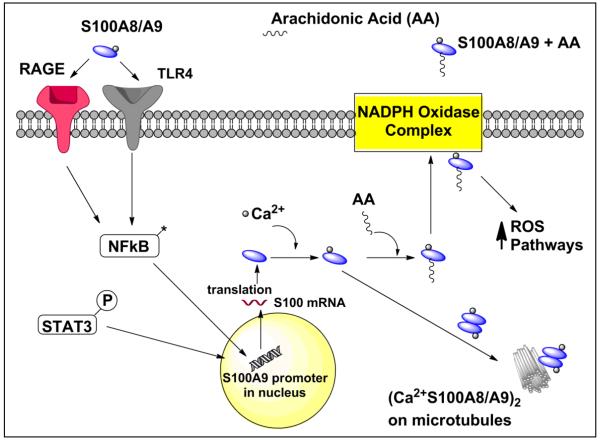Figure 2.
Intracellular S100A9 activity: S100A8/A9 binds to cell receptors initiating signal transduction through NFκB pathways promoting increased S100A9 transcription. Ca2+-S100A9 complexes with microtubules increasing cell motility. In addition, Ca2+-S100A9 increases the oxidative potential of cells by migrating to the NADPH complex via PKC dependent mechanisms and activating reactive oxygen species pathways. S100A9 is then released into the extra-cellular space.

